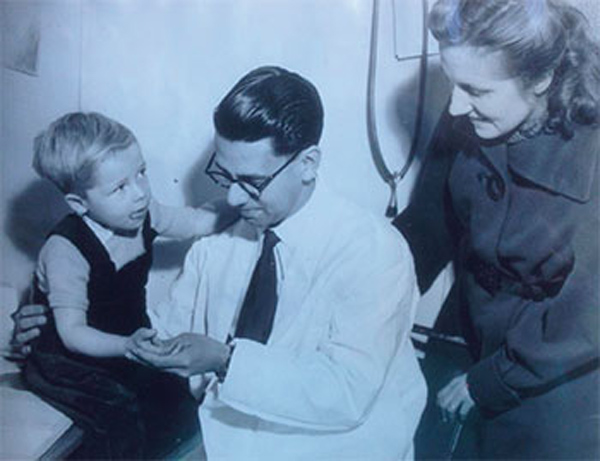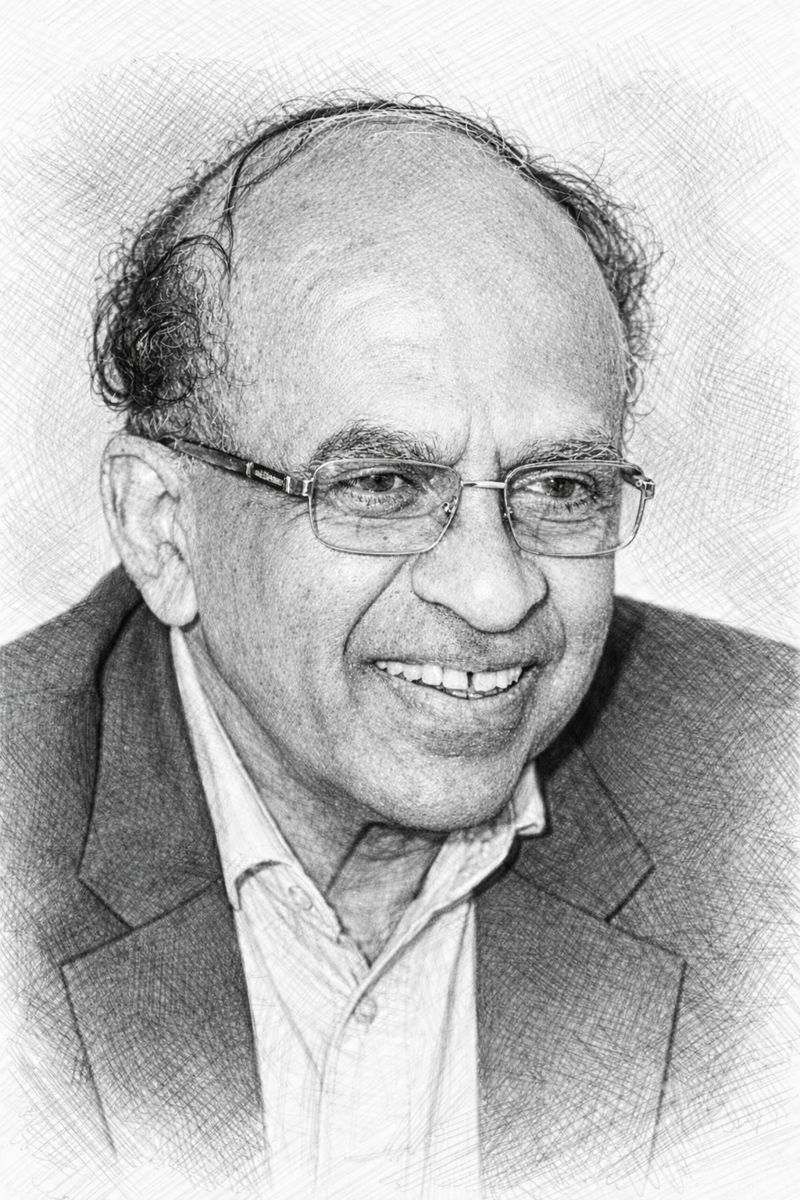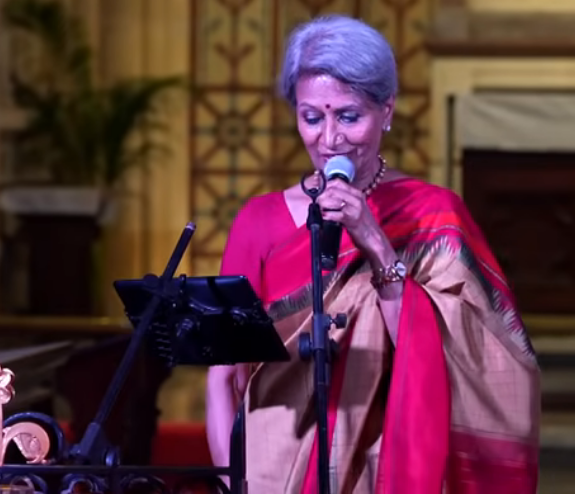Lanka-born and educated doctor helps contain epidemic in the UK

Source:The Island
Miles Ellingham on how a smallpox epidemic was averted by his grandfather’s swift and meticulous tracing of contacts
This article is about Dr Clifford Jansz (1924-1998), written by his grandson a young journalist, Miles Ellingham who lives in England.
Lockdown life has thrown families together again and doubtless revealed many a forgotten episode as lofts have been braved, photo albums revisited and talk of generations renewed. My own finding is an extraordinary and timely one: the report of a smallpox epidemic that my grandfather managed in Harrow. The episode was Britain’s last-but-one outbreak of smallpox, in 1973. If it was not swiftly contained, and all contacts found and treated, there was a threat of smallpox breaking out across London and potentially beyond. The World Health Organization was alerted.
Few diseases are more frightening than smallpox. It is extraordinarily infectious – spread in the air or on surfaces from the tiniest of particles – and obscenely painful. If the smallpox is variola major, the dominant strain, its first signs are high temperatures and vomiting. Then at five days, the distinctive smallpox rash spreads as sores break out in and around the mouth, arms, legs, hands and feet. At eight days these sores turn to pustules ‘like peas under the skin’. Death follows shortly, generally from multi organ-failure.
With Coronavirus dominating our lives, my mother recalled that her father, who died when I was two, had left a printed report of the smallpox outbreak. She also recalled that period well herself, as her father, Dr Clifford Jansz, had been on call 24-hours a day as chief medical officer for Harrow. The phone had been off limits to the family in case of an emergency call and for three weeks her father had worked around the clock.
After turning the house upside down in a search for the report, we finally did the obvious and looked online. And there it was, in the Wellcome Library Archives: a 16-page report entitled ‘The Health of Harrow 1973: The Annual Report of the Medical Officer of Health and Principal School Medical Officer’. We looked for more online, with little result, save for a snippet or two in The Harrow Observer. My mother recalled being told not to mention anything to her friends, at the time, and an atmosphere of secrecy prevailing, perhaps to prevent mass panic.
To put the episode in perspective, the Covid-19 crisis we’re weathering may feel momentous, but the risks of the disease – and the respite it seems to offer children and a great swathe of the young and reasonably healthy – pale in comparison to smallpox. The ‘Red Plague’, as it was known, killed over 300 million people in the twentieth century alone. In Spanish colonial times, it decimated the Aztec and Inca civilisations. It had been a killer since earliest recorded history, with traces found in the tombs of Ancient Egyptian pharaohs. The last natural case of smallpox was in Somalia in 1977 and in 1980 the World Health Assembly declared ‘the world and its people’ free from its blight. Today, just two samples exist, for research purposes, one in the Centre for Disease Control in Atlanta, Georgia, the other at a laboratory near Novosibirsk, Siberia. There is controversy over whether these should be destroyed.
A crucial difference between Covid-19 and the variola major smallpox that appeared in Harrow is, of course, the existence of a vaccine. A vaccine of sorts has existed since 1796, when Edward Jenner inoculated the eight-year-old James Phipps – his gardener’s son – with cowpox before injecting him with the deadly smallpox virus. This had been refined via the continuum of modern medicine, but vaccines for smallpox are dangerous, with common and serious complications. You don’t want to undertake mass smallpox vaccinations. Instead, you need to forensically trace every known smallpox contact, primary and secondary, quarantine the potentially infected and vaccinate a carefully targeted population around them. Even with the ammunition of a vaccine, an outbreak of smallpox was a serious existential threat in 1973.
In my grandfather’s understated language the report begins: ‘On the 4th April, 1973 at approximately 4.20 pm, a telephone call was received from the Health Department of the London Borough of Barnet, that Mr. & Mrs. H, who were normally resident in Wealdstone, Harrow, had been found to have smallpox. They were in West Hendon Isolation Hospital and were being transferred to the smallpox isolation hospital in Dartford.’
‘Mr H,’ he wrote, fell ill ‘but continued to go to work’. Two days later, too ill for his job as an electrician, he drove some friends into work and retired to ‘The Red Lion Public House in Harrow Weald’. Already the list of potential contacts was growing at an alarming rate. Soon his wife, Mrs H, fell ill, too, and the potential contacts multiplied. She had mixed with multiple friends and had been visited by a ‘tallyman’, a door-to-door dress salesman.
When Dr Jansz was alerted, he moved fast. First, the staff on duty at the Health Department were vaccinated; then ‘household contacts in Wealdstone”. All GPs and local hospitals were given ‘early warning’ and the ambulance that had taken Mr and Mrs. H. to hospital was taken out of service. Additional supplies of the vaccine were checked and ordered while a temporary control centre was set up in Harrow Civic Centre.
Following the establishment of the control centre came the most pressing and nerve-wracking task – contact tracing. The Harrow Observer was enlisted to run a front page calling on all potential contacts from The Red Lion to ‘come forward for vaccination’. As if to underscore the urgency of the situation, Mrs H died in isolation on 6 April, and Mr H nine days later.
The primary contacts seemed manageable for the most part. There were the H’s household contacts: two young boys, Mr H’s sister and a lodger. The boys were excluded from school, the adults from work. The five doctors that had initially treated the couple were ‘vaccinated and kept under surveillance’. And the gang of workers with which Mr H. worked were also isolated and monitored. The same went for various friends and relatives in the local area.
The main difficulty came with tracing the secondary contacts, described as ‘numerous’ in the characteristic medical jargon of disaster.
Mr and Mrs H, had, according to the report, unrestricted movements during their whole incubation period, meaning ‘it was not possible to dispute any claim of a person that he or she had casual contact with in the street’. Therefore a much wider number of people had to be vaccinated.
Mr H’s sister, for instance, worked for a large firm, and had come into contact with many fellow employees; all of them had to be vaccinated. Likewise, the lodger worked for a company supplying dental equipment; his workmates and buyers had to be traced and vaccinated. So too did with all the classmates of the H children.
Then there were the potential contacts from The Red Lion pub, 147 of whom, thanks to attentive help from the landlord, were traced and treated.
Tradesmen such as milkmen, coalmen, newspaper boys also visited the H’s house, including the tallyman who sold the dresses. Mrs H had tried one of the Tallyman’s dresses on but had not bought it, meaning the dress had remained in circulation, creating more potential primary and secondary contacts. The tallyman was traced to Enfield and ‘appropriate action’ was taken by the medical officer there.
It was also discovered that the ambulance that had been used to take Mr and Mrs H to hospital had been used to take an elderly man to an Old People’s Home. ‘All staff and residents’ had to be vaccinated.
The WHO was also notified and declared London ‘an infected area’, which meant requiring ‘vaccination certificates’ from travelers going abroad, including ‘several large parties of schoolchildren on school trips’, while a class of German schoolboys ‘holidaying in Harrow’ also had to be vaccinated.
In the end there was a total of 3,050 vaccinations – of whom 231 were primary contacts, 1,969 secondary contacts, and 850 travelers. Thanks to the rapid action and organisation of the senior medical staff, working continuous shifts at the control centre in Harrow, no new cases were reported. The borough was declared smallpox free on 20th April, sixteen days after the H’s diagnosis had been confirmed. What might have become an era-defining disaster faded into an obscure local story and a footnote in smallpox’s epidemiological history.
My grandfather’s report makes no mention of how the H’s contracted smallpox. Perhaps this was simply outside the remit of his report. Or perhaps it was deliberately kept secret for it was later discovered that this was not a ‘natural outbreak’ of smallpox but had its origins in a research laboratory at the London School of Hygiene and Tropical Medicine. On February 28 an Irish lab technician called Ann Algeo had visited the lab to get equipment, at a time when pox-infected membranes were being harvested. She fell ill but was misdiagnosed and admitted to a regular hospital, where she shared a newspaper, Ireland’s Own, with Mrs H.
Although I failed to find my grandfather’s printed report in the loft, I did find an illuminated vellum presented to him in 1974 by the Mayor of Harrow, with ‘sincere thanks and appreciation for his outstanding qualities … in his control of the emergency situation which arose during the outbreak of smallpox in the Borough’. He was an unassuming man, a Dutch Burgher immigrant from Sri Lanka, who gave nearly 40 years of service to the NHS, working quietly on public health and preventive medicine – eventually becoming disheartened by Thatcher-era cutbacks. I can’t help myself from thinking of him as we stand and applaud our current NHS frontline staff – and those others who knew all along that there ‘is such a thing as society’.





















